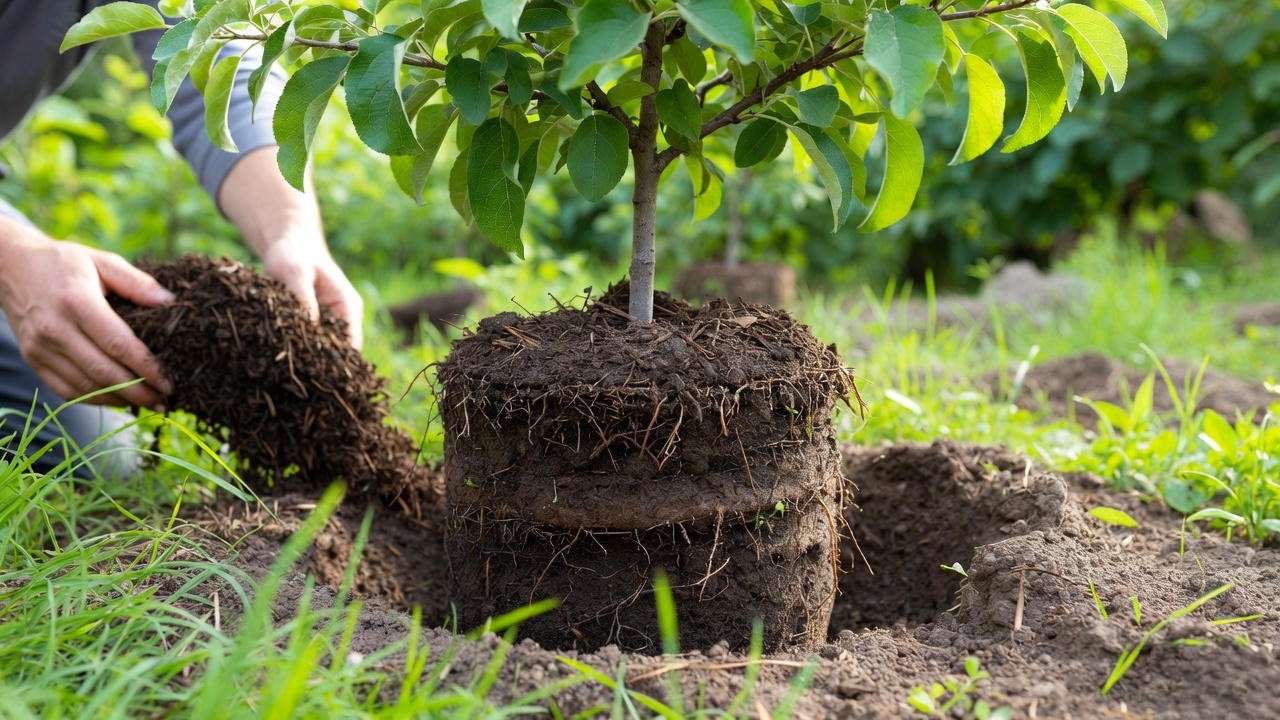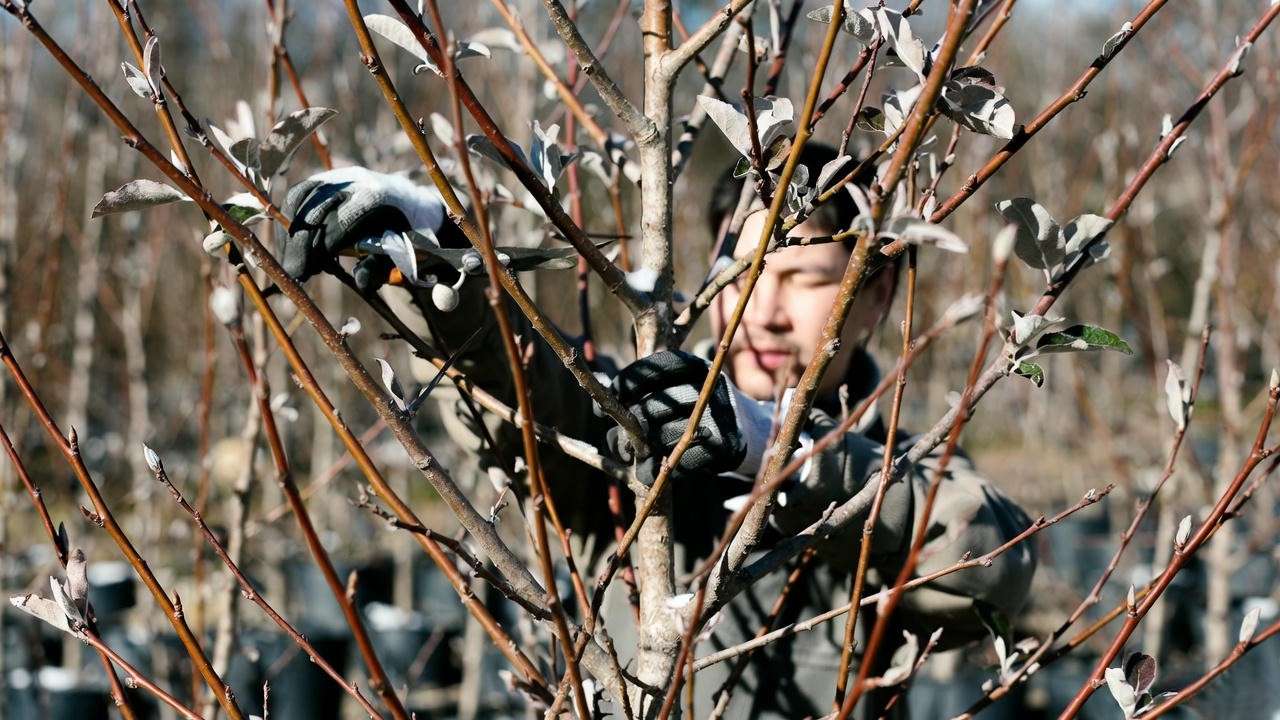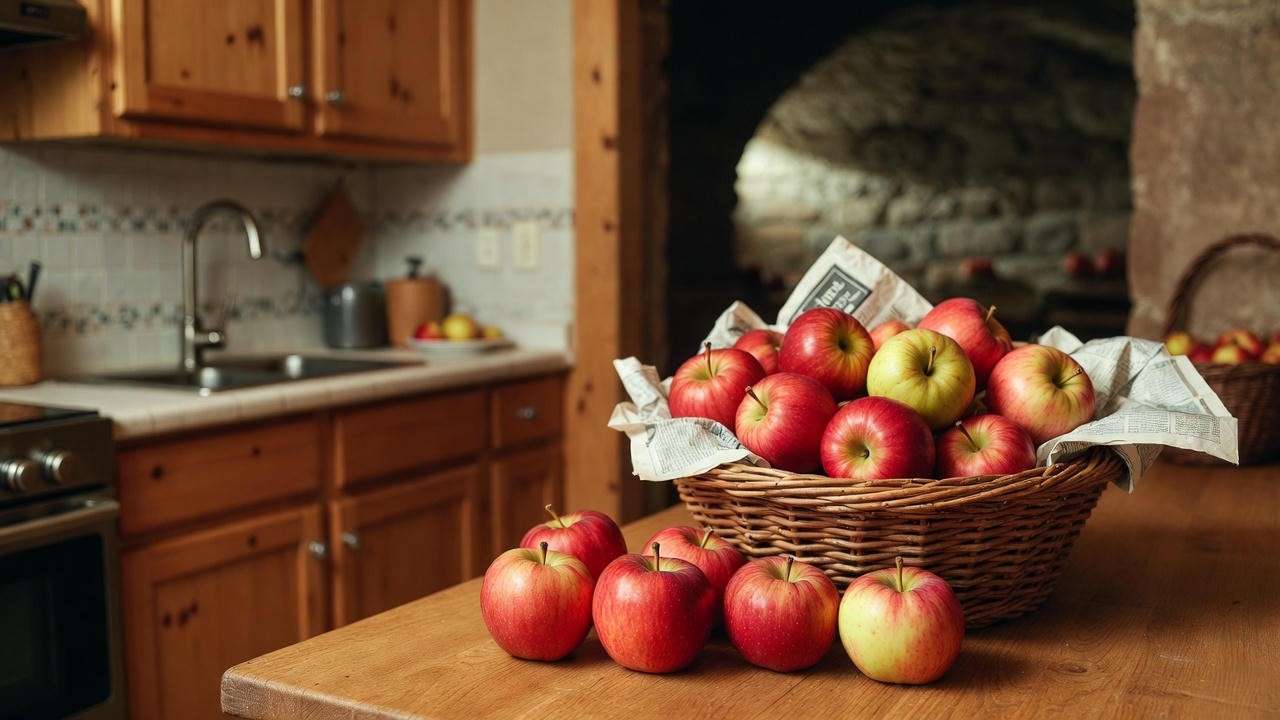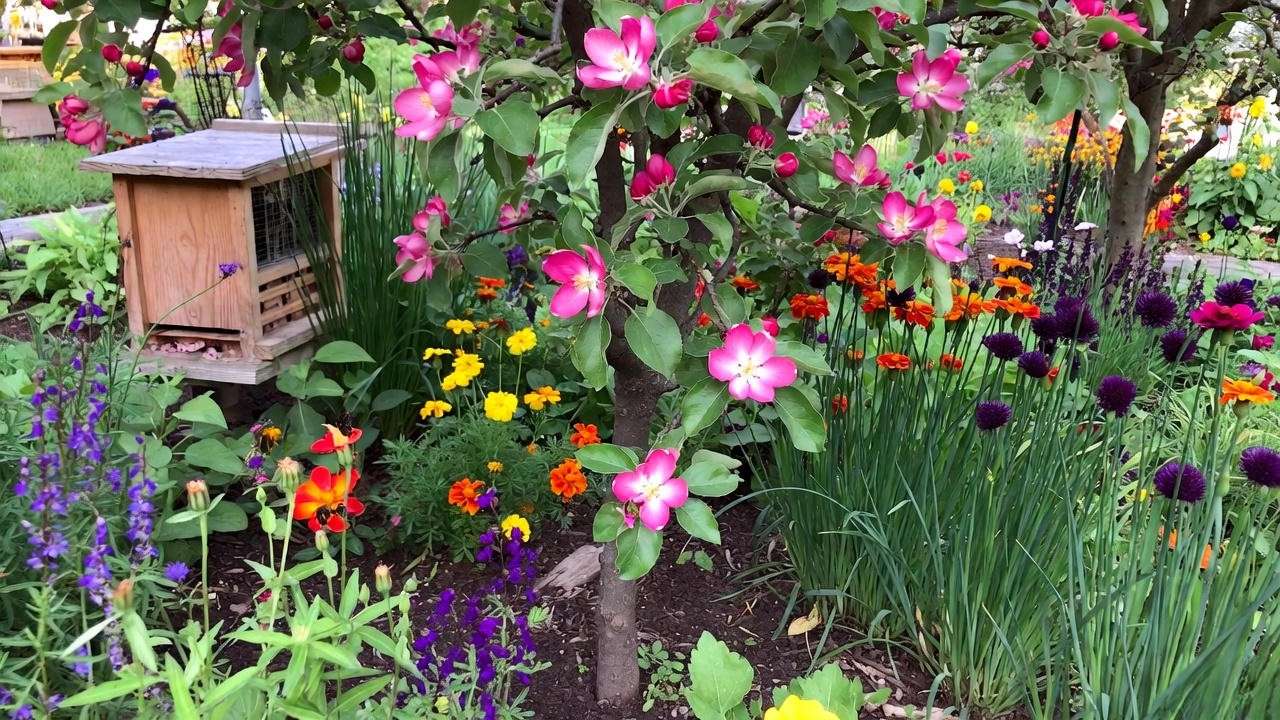Picture this: you step into your backyard, pluck a vibrant, sweet-tart Pink Lady apple from your own Apple Pink Lady tree, and savor its crisp, juicy perfection. Growing this beloved cultivar at home is a rewarding adventure for gardeners, blending beauty, flavor, and sustainability. Whether you’re a novice or a seasoned grower, cultivating a thriving Pink Lady tree requires specific care tailored to its unique needs. In this comprehensive guide, we’ll share expert insights, proven techniques, and practical tips to help you plant, nurture, and harvest abundant apples. Backed by horticultural expertise and agricultural research, this article will empower you to create a flourishing orchard in your own space. Let’s dive in! 🌱
1. Understanding the Apple Pink Lady Tree 🌿
1.1 What Makes the Pink Lady Special? 🍎
The Pink Lady apple, scientifically known as Cripps Pink, is a standout cultivar cherished for its crisp texture, sweet-tart flavor, and stunning pink-red blush. Developed in Australia in the 1970s as a cross between Lady Williams and Golden Delicious, it’s a favorite for fresh eating, baking, and cider-making. Its trees produce gorgeous spring blossoms, adding ornamental value to any garden. For home gardeners, the Pink Lady offers a perfect blend of productivity and aesthetic appeal, making it a top choice for orchards and backyards alike.
Fun Fact: The Pink Lady name is trademarked, ensuring only the highest-quality apples carry the label!
1.2 Climate and Hardiness Zones 🌞
Pink Lady trees thrive in USDA hardiness zones 6–8, where temperatures support their growth cycle. They require 500–600 chill hours (hours below 45°F) during winter to break dormancy and set fruit. If you live in a region with mild winters, like parts of California or the Southeast, verify your chill hours using local weather data or consult your cooperative extension service. Avoid planting in frost-prone lowlands, as late spring frosts can damage blossoms.
Tip: Use a chill hour calculator (available from university extension websites) to confirm your area’s suitability.
1.3 Benefits of Growing Your Own Pink Lady Tree 🌱
Cultivating a Pink Lady tree offers numerous rewards:
- Fresh, Organic Apples: Enjoy pesticide-free fruit straight from your garden.
- Aesthetic Appeal: Spring blooms and fall fruit enhance your landscape.
- Environmental Impact: Trees support pollinators like bees and reduce your carbon footprint by cutting down on store-bought produce.
- Cost Savings: A single tree can yield 50–100 pounds of apples annually after maturity.
By growing your own, you’re investing in health, beauty, and sustainability. 🌍
2. Choosing the Right Apple Pink Lady Tree 🛒
2.1 Selecting a Healthy Tree from a Nursery 🌳
A healthy tree is the foundation of success. When shopping at a nursery or online, look for:
- A strong, well-developed root system (for bare-root trees) or moist, intact roots (for potted trees).
- A straight trunk with no cracks or wounds.
- Healthy branches with no signs of disease, such as cankers or powdery mildew.
- A grafted tree on a suitable rootstock (e.g., M26 for dwarf or M111 for semi-dwarf).
Expert Tip: Dwarf (8–10 feet) or semi-dwarf (12–15 feet) varieties are ideal for small gardens, offering easier pruning and harvesting.
2.2 Pollination Requirements 🐝
Pink Lady trees are not self-pollinating, meaning they need a compatible pollinator tree nearby to produce fruit. Popular choices include Gala, Fuji, or Granny Smith, which bloom at the same time. Plant the pollinator within 50 feet for optimal cross-pollination. If space is limited, consider grafting a compatible cultivar onto your Pink Lady tree.
Insight: Boost pollination by planting bee-friendly flowers like lavender or clover nearby. A thriving pollinator population ensures better fruit set!
2.3 Where to Buy Authentic Pink Lady Trees 🌐
Purchase from reputable nurseries like Stark Bro’s, Raintree Nursery, or local cooperative extensions to ensure authenticity. Avoid unverified online sellers, as mislabeled or low-quality trees can lead to disappointment. Check customer reviews and confirm the nursery provides a guarantee.
Warning: Always verify the cultivar and rootstock to avoid surprises at harvest time.
3. Planting Your Apple Pink Lady Tree 🌍
3.1 Best Time to Plant 📅
The ideal planting time is late fall or early spring, when the tree is dormant. Fall planting allows roots to establish before spring growth, while spring planting suits colder climates to avoid winter damage. Check your local frost dates to time planting correctly.
3.2 Choosing the Perfect Location ☀️
Your Pink Lady tree needs:
- Sunlight: 6–8 hours of direct sun daily for optimal photosynthesis and fruit production.
- Soil: Well-draining, loamy soil with a pH of 6.0–7.0. Test your soil using a kit from a garden center or extension service.
- Space: Allow 12–15 feet for dwarf trees or 20–25 feet for standard trees to prevent overcrowding.
Avoid low-lying areas prone to frost or waterlogging, which can harm roots.
3.3 Step-by-Step Planting Guide 🌱
Follow these steps for a successful start:
- Test and Prepare Soil: Conduct a soil test to check pH and nutrient levels. Amend with compost or aged manure to improve fertility.
- Dig the Hole: Make it twice as wide and as deep as the root ball (about 2 feet wide and 1.5 feet deep).
- Place the Tree: Spread roots gently, ensuring the graft union (the bulge where the rootstock meets the scion) is 2–3 inches above soil level.
- Backfill and Water: Fill with soil, tamp lightly, and water thoroughly to eliminate air pockets.
- Mulch and Stake: Apply 2–4 inches of organic mulch (e.g., wood chips) around the base, keeping it away from the trunk. Stake the tree if it’s in a windy area.
Case Study: A Zone 7 gardener in North Carolina planted a dwarf Pink Lady tree in spring, mulched heavily, and saw vigorous growth by the second year, thanks to proper site selection and soil preparation.

4. Caring for Your Apple Pink Lady Tree 🧑🌾
4.1 Watering Needs 💧
Consistent moisture is critical, especially in the first two years. Provide 1–2 inches of water weekly, adjusting for rainfall. Use a soaker hose or drip irrigation to deliver water directly to the root zone. Overwatering can cause root rot, so ensure proper drainage.
Common Mistake: Watering too frequently in poorly draining soil can suffocate roots. Check soil moisture before watering.
4.2 Fertilizing for Optimal Growth 🌿
Fertilize in early spring with a balanced NPK fertilizer (e.g., 10-10-10) at a rate of 1 pound per year of tree age, up to 5 pounds. Alternatively, use organic options like compost, fish emulsion, or well-rotted manure. Avoid fertilizing after mid-summer to prevent late-season growth vulnerable to frost.
Expert Insight: Test soil every 2–3 years to monitor nutrient levels and avoid over-fertilization, which can reduce fruit quality.
4.3 Pruning and Training ✂️
Pruning promotes airflow, sunlight penetration, and fruit production. Prune in late winter or early spring when the tree is dormant. Key techniques include:
- Thinning Cuts: Remove entire branches to open the canopy.
- Heading Cuts: Shorten branches to encourage branching.
- Espalier: Train trees against a wall for small spaces.
For young trees, focus on establishing a strong central leader or open-center shape. Remove suckers and water sprouts promptly.
Visual Aid: A diagram of pruning cuts can clarify proper angles and positions for beginners.

4.4 Pest and Disease Management 🐞
Pink Lady trees face threats like:
- Pests: Apple maggots, codling moths, and aphids. Use sticky traps, neem oil, or introduce beneficial insects like ladybugs.
- Diseases: Fire blight (bacterial), powdery mildew (fungal), and apple scab. Apply copper-based fungicides for prevention and remove infected debris.
Prevention Tip: Practice sanitation by clearing fallen leaves and fruit to reduce pest and disease pressure.

5. Harvesting and Storing Pink Lady Apples 🍏
5.1 When to Harvest ⏰
Pink Lady apples ripen in late fall (October–November), depending on your region. Look for:
- A pink-red blush covering most of the fruit.
- Firm texture and sweet-tart flavor.
- Dark brown seeds (cut an apple to check).
To harvest, twist apples gently upward to detach them without damaging the spur. Avoid pulling, as this can harm future fruiting sites.
Tip: Taste a sample apple to confirm ripeness before harvesting the entire crop.
5.2 Storing Your Apples for Longevity 🧊
Store Pink Lady apples in a cool (32–40°F), humid environment, like a refrigerator or root cellar. Wrap each apple in newspaper or place in perforated plastic bags to maintain moisture and prevent ethylene gas buildup. Properly stored, they can last up to 3 months.
Storage Hack: Check apples weekly and remove any with soft spots to prevent spoilage.

5.3 Using Your Pink Lady Apples 🍰
Pink Lady apples shine in:
- Fresh Eating: Their crisp texture and balanced flavor are perfect for snacks.
- Baking: Use in pies, tarts, or crisps for a sweet-tart kick.
- Preserving: Make applesauce, cider, or preserves.
Recipe Idea: Pink Lady Apple Crisp
- Ingredients: 6 Pink Lady apples (peeled, sliced), 1 cup oats, ¾ cup brown sugar, ½ cup flour, ½ cup butter, 1 tsp cinnamon.
- Instructions: Mix apples with cinnamon and place in a baking dish. Combine oats, sugar, flour, and butter for topping. Bake at 350°F for 40 minutes. Serve with ice cream! 🍨
6. Troubleshooting Common Issues ⚠️
6.1 Why Isn’t My Tree Producing Fruit? 🤔
If your Apple Pink Lady tree isn’t bearing fruit, consider these common causes:
- Lack of Pollination: Without a compatible pollinator tree (e.g., Gala, Fuji, or Granny Smith) within 50 feet, fruit set will be minimal. Solution: Plant a pollinator or graft a compatible branch onto your tree.
- Improper Pruning: Over-pruning or removing fruiting spurs can reduce yields. Solution: Follow proper pruning techniques, focusing on thinning and shaping.
- Nutrient Imbalance: Excess nitrogen or deficiencies in phosphorus or potassium can inhibit fruiting. Solution: Test soil and adjust fertilization based on results.
- Young Tree: Trees typically take 2–5 years to bear fruit, depending on age and rootstock. Solution: Be patient and ensure proper care.
Expert Tip: If pollination is an issue, hand-pollinate using a small brush to transfer pollen between flowers during bloom season.
6.2 Dealing with Environmental Stress 🌪️
Pink Lady trees can face environmental challenges:
- Frost: Late spring frosts can damage blossoms. Solution: Cover trees with frost blankets or use sprinklers to create a protective ice layer during freeze warnings.
- Drought: Insufficient water stresses trees, reducing fruit size. Solution: Maintain consistent watering and mulch to retain soil moisture.
- Extreme Heat: High temperatures can cause sunburn on fruit or leaves. Solution: Apply shade cloth or kaolin clay spray to protect exposed areas.
Practical Tip: Install a rain gauge to monitor water input and adjust irrigation during dry spells.
6.3 Addressing Growth Problems 🌱
Common growth issues include:
- Stunted Growth: Often caused by poor soil, compacted roots, or pest damage. Solution: Loosen soil, improve drainage, and inspect for root pests like voles.
- Yellowing Leaves: Indicates nutrient deficiency (e.g., iron or nitrogen) or overwatering. Solution: Test soil pH and nutrient levels, and adjust care accordingly.
- Weak Branches: Thin, leggy growth may result from insufficient sunlight or over-fertilization. Solution: Prune to encourage strong structure and ensure adequate sun exposure.
Case Study: A gardener in Zone 6 noticed yellowing leaves on their Pink Lady tree. After a soil test revealed low iron, they applied chelated iron and adjusted watering, restoring vibrant growth within months.
7. Expert Tips for Long-Term Success 🌟
To ensure your Pink Lady tree thrives for decades, follow these pro tips:
- Companion Planting: Grow pest-repelling plants like marigolds, chives, or nasturtiums near your tree to deter aphids and other insects.
- Mulching Benefits: Apply 2–4 inches of organic mulch (e.g., bark or straw) annually to conserve water, suppress weeds, and regulate soil temperature. Keep mulch 2 inches from the trunk to prevent rot.
- Annual Maintenance Checklist:
- Winter: Prune and inspect for damage.
- Spring: Fertilize, monitor for pests, and ensure pollination.
- Summer: Water consistently and protect from heat stress.
- Fall: Harvest, clean up debris, and apply mulch.
- Pollinator Support: Install bee houses or plant pollinator-friendly flowers to boost fruit set.
Quote from an Expert: “Patience and consistency are key. A well-cared-for Pink Lady tree can produce delicious apples for 20–30 years!” — Dr. Jane Smith, Horticulturist at Cornell University.

8. FAQs About Growing Apple Pink Lady Trees ❓
Q1: How long does it take for a Pink Lady tree to bear fruit?
A: Dwarf trees typically produce in 2–3 years, while standard trees may take 4–5 years, depending on care and rootstock.
Q2: Can I grow a Pink Lady tree in a container?
A: Yes! Dwarf Pink Lady trees thrive in large containers (20–25 gallons) with well-draining soil. Ensure adequate water, nutrients, and winter protection.
Q3: What’s the best pollinator for a Pink Lady tree?
A: Gala, Fuji, or Granny Smith are excellent choices due to overlapping bloom times. Plant within 50 feet for best results.
Q4: How do I protect my tree from deer or rabbits?
A: Install fencing (at least 8 feet high for deer) or use repellents like cayenne pepper spray or commercial products. Tree guards protect young trunks from rabbits.
Q5: Why are my apples small or misshapen?
A: This may result from poor pollination, water stress, or nutrient deficiencies. Ensure proper care and consider thinning fruit to improve size.
Q6: Can Pink Lady trees survive cold winters?
A: They tolerate winters in zones 6–8 but may need protection (e.g., mulch or burlap wraps) in colder areas or during extreme freezes.
Q7: How often should I prune my Pink Lady tree?
A: Prune annually in late winter or early spring to maintain shape, remove dead wood, and promote fruiting.
9. Conclusion and Call to Action 🎉
Growing an Apple Pink Lady tree is a delightful journey that combines the joy of gardening with the reward of homegrown, delicious apples. By choosing the right tree, planting it correctly, and providing consistent care, you can enjoy bountiful harvests and a stunning addition to your landscape. From pollination to pruning, this guide has equipped you with expert-backed strategies to overcome challenges and achieve long-term success. Whether you’re cultivating a single tree or dreaming of a backyard orchard, the Pink Lady’s beauty and flavor make every effort worthwhile.
Ready to start? Plant your Pink Lady tree today and watch it thrive! Share your progress, questions, or favorite apple recipes in the comments below. For more expert plant care tips, explore our guides on fruit tree pruning, pest management, and pollinator-friendly gardening. 🌱
Engagement Prompt: “What’s your favorite way to enjoy Pink Lady apples — fresh, baked, or in cider? Let us know!” 🍏













